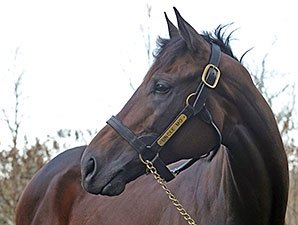What is Uncle Mo Worth?


Nyquist's third-place finish in the May 21 Preakness Stakes (gr. I) won't diminish the luster of Uncle Mo , his sire and dominant second-crop stallion.
A week before the second leg of the Triple Crown, industry experts conservatively projected the value of Ashford Stud's son of Indian Charlie had grown to between $120-$140 million.
Depending on where Uncle Mo's stud fee progresses over the next few years, experts estimate that Uncle Mo's value could climb as high as $245 million.
Uncle Mo began the breeding season with a $75,000 stud fee and was reportedly booked full by the end of December. Several breeders said they expect his fee to be at least $150,000 next year. Based on the strength of his record-setting freshman year, his fee tripled between 2015 and 2016.
Remarkable would be an understatement regarding Uncle Mo’s first-crop year, with his initial runners led by Sentient Jet Breeders' Cup Juvenile (gr. I) winner and champion 2-year-old male Nyquist. The young stallion ended 2015 with a record $3,675,294 in progeny earnings.
Current leading U.S. stallion Tapit , who set his own progeny earnings records as overall top sire in 2014 and 2015, held the previous record.
So far in his second-crop year, Uncle Mo has not lost any momentum. Prior to the Preakness he had already set another record for second-crop sires with more than $6.8 million in progeny earnings, exceeding the previous $6,590,211 record set in 2007 by Street Cry.
Uncle Mo is having such a strong year that he ranks second on the general leading sire list, a little more than a half-million in progeny earnings behind Tapit.
"If Uncle Mo puts together another year like this year, that $150,000 would be a low number," said Charlie Boden, stallion season sales director and racing manager for Calumet Farm.
Stallion valuation is part economics, part instinct. The economics begins with the stud fee. If, for example, Uncle Mo's stud fee next year is $200,000 and he sires 175 live foals from the 2017 mares bred that would equal $35 million in revenue.
What multiple is applied is where gut instinct comes in. Most in the stallion business use a multiple of four, which would put Uncle Mo's value at $140 million.
Ron Kirk, owner and president of Kirk Horse Insurance, said a four-times multiple is too low and suggests a six- or seven-times multiple is more in line. A seven-times multiple against $35 million in annual revenue puts Uncle Mo's value at $245 million.
"Uncle Mo is worth a higher multiple of income because he is less vulnerable to downside changes," Kirk said. "The horse has established himself. It would take a lot of turmoil in the market to affect his value."
